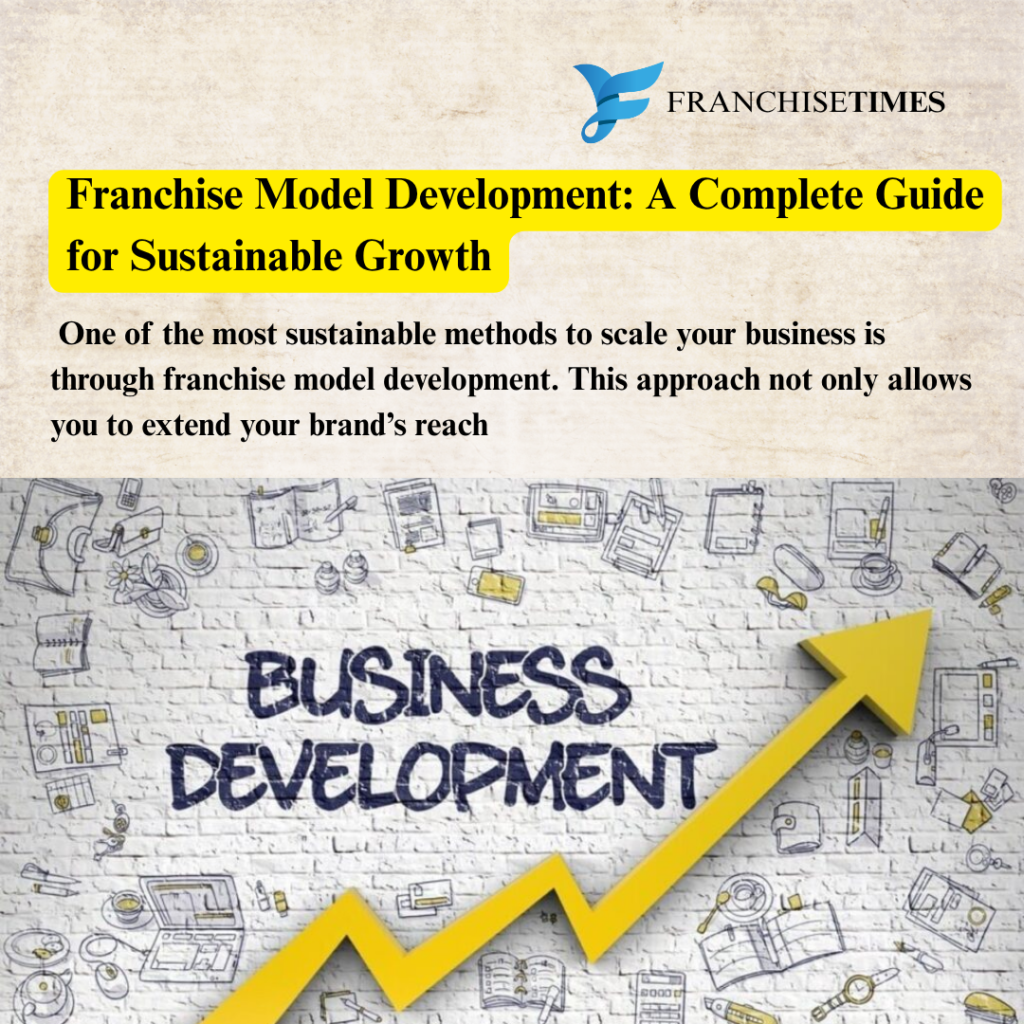Franchise Model Development: A Complete Guide for Sustainable Growth
In today’s competitive business landscape, expansion strategies can either make or break your brand. One of the most sustainable methods to scale your business is through Franchise Growth Model Guide. This approach not only allows you to extend your brand’s reach but also ensures consistent service quality across various locations. If you are looking to build a thriving franchise network, understanding the nuances of franchise model development is crucial.

Interestingly, many entrepreneurs hesitate to adopt franchising, assuming it is complex and difficult to manage. However, with a structured approach, you can develop a profitable, scalable, and sustainable franchise system. Let’s dive into the essentials of building a successful franchise model that can help your business grow consistently.
1. Understanding the Fundamentals of Franchise Model Development
First, let’s break down what Franchise Growth Model Guide truly means. It is the systematic process of creating a replicable business model that can be transferred to franchisees while maintaining brand integrity and operational consistency. Essentially, it transforms your proven business into a system others can invest in and operate under your brand.
Additionally, this model empowers entrepreneurs to expand without significant capital expenditure. Franchisees invest in the business, and you, as the franchisor, provide them with operational guidelines, branding, and ongoing support. Thus, it becomes a win-win model that benefits both parties.
Furthermore, successful franchise model development involves a clear franchise agreement, training programs, operational manuals, and marketing support systems. You must ensure your business processes are well-documented and easily teachable to franchisees for seamless replication.
2. Key Steps in Franchise Model Development
While every business is unique, the steps in franchise model development generally follow a structured approach:
Step 1: Evaluate Business Readiness
You need to assess if your business is ready to scale through franchising. Consider whether your business is profitable, has a strong brand, and operates with standardized systems that can be replicated in different locations.
Step 2: Develop Operational Manuals
These manuals act as your blueprint for franchisees, covering everything from daily operations to customer service guidelines. Moreover, having these documents ensures your brand’s consistency across all franchise outlets.
Step 3: Legal Framework and Agreements
Drafting a clear franchise agreement is essential. This document outlines the rights, obligations, fees, territories, and support structure for the franchise relationship. Additionally, it protects your intellectual property and ensures your franchisees understand their responsibilities.
Step 4: Franchise Training Programs
Training is critical for franchise success. You must develop onboarding programs and continuous learning modules for franchisees and their staff to maintain operational efficiency.
Step 5: Marketing and Lead Generation Strategy
A clear marketing plan is vital for attracting franchisees. You should have a franchise marketing kit and use digital platforms to reach your target audience, demonstrating the value of your franchise opportunity.
Step 6: Pilot Testing the Franchise Model
Before launching on a large scale, consider testing the franchise model with a few outlets. This phase helps you identify operational gaps and refine your processes, ensuring a smoother expansion journey.
By following these steps, you build a robust foundation for your franchise model development, increasing your chances of sustainable success.
3. Benefits of a Well-Structured Franchise Model
Once you have established a structured franchise model development plan, your business can enjoy several advantages.
Rapid Expansion
Franchising allows you to expand rapidly without heavy capital investments since franchisees bear the cost of opening new locations.
Increased Brand Reach
Franchisees help your brand reach new territories and customer segments, enabling your business to establish a wider market presence.
Shared Risk
Expansion risks are shared with franchisees, reducing your financial exposure while still allowing you to grow.
Operational Efficiency
A standardized franchise model leads to consistent customer experiences across all outlets, maintaining the quality and reliability of your brand.
Focus on Core Business
Since franchisees handle day-to-day operations, you can focus on enhancing your core offerings, innovation, and brand strategy for continued growth.
As a result, franchise model development becomes a strategic pathway for businesses that aim to expand sustainably while retaining quality and brand control.
4. Challenges in Franchise Model Development and How to Overcome Them
While the benefits are clear, you must also be aware of challenges in franchise model development to navigate them effectively.
Challenge 1: Maintaining Consistency
Franchisees may deviate from your standards, leading to inconsistency in customer experience. To address this, ensure you have detailed operational manuals and regular audits.
Challenge 2: Legal Complexities
Franchise agreements can become legally complex, especially when expanding across states or countries. It is essential to work with experienced franchise attorneys to create clear, compliant agreements.
Challenge 3: Franchisee Selection
Choosing the wrong franchise partners can impact your brand negatively. Therefore, develop a robust selection process with clear criteria, financial checks, and alignment with your brand values.
Challenge 4: Training and Support Costs
Providing training and ongoing support can be resource-intensive. However, consider it an investment, as well-trained franchisees contribute significantly to your brand’s success.
Challenge 5: Conflict Management
Conflicts may arise due to miscommunication or unmet expectations. To prevent this, establish clear communication channels, transparent processes, and mechanisms for addressing grievances swiftly.
By acknowledging these challenges and preparing to address them proactively, your franchise model development journey becomes smoother and more effective.
5. Tips for Successful Franchise Model Development
Now that you understand the process and challenges, here are actionable tips to enhance your franchise model development:
✅ Start Small and Scale Gradually: Begin with a few franchises and refine your processes before expanding rapidly.
✅ Invest in Technology: Use CRM and franchise management software to streamline operations, track performance, and enhance communication with franchisees.
✅ Build a Strong Support System: Offer continuous training, marketing assistance, and operational guidance to help franchisees succeed.
✅ Prioritize Relationship Building: Establish a collaborative culture with your franchisees, making them feel valued as partners in your business growth.
✅ Collect Feedback and Adapt: Regularly gather feedback from franchisees and customers to identify improvement areas and update your systems accordingly.
Implementing these tips ensures that your franchise model development strategy remains dynamic, responsive, and aligned with your long-term vision.
Conclusion
Franchise Growth Model Guide is not merely about expanding your business; it is about building a replicable, profitable, and scalable system that benefits both you and your franchisees. By following a systematic approach, investing in strong operational frameworks, and providing continuous support, you can build a franchise network that enhances your brand’s reach while maintaining its core values and standards.
Moreover, developing a franchise model aligns with the modern entrepreneurial landscape, where collaboration and shared growth are key. As you embark on this journey, remember that franchising requires commitment, consistency, and a willingness to adapt. However, the rewards of a well-executed franchise model are immense, leading to sustainable growth, brand recognition, and long-term profitability.
Start planning your franchise model development today and unlock your business’s potential to expand confidently and sustainably in the competitive market.
